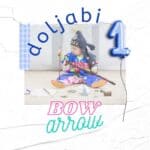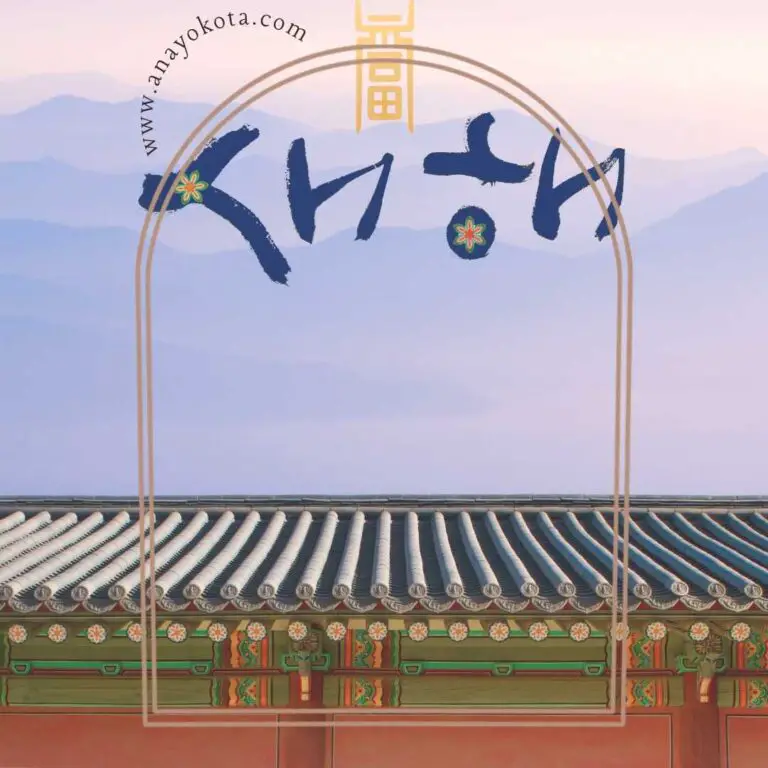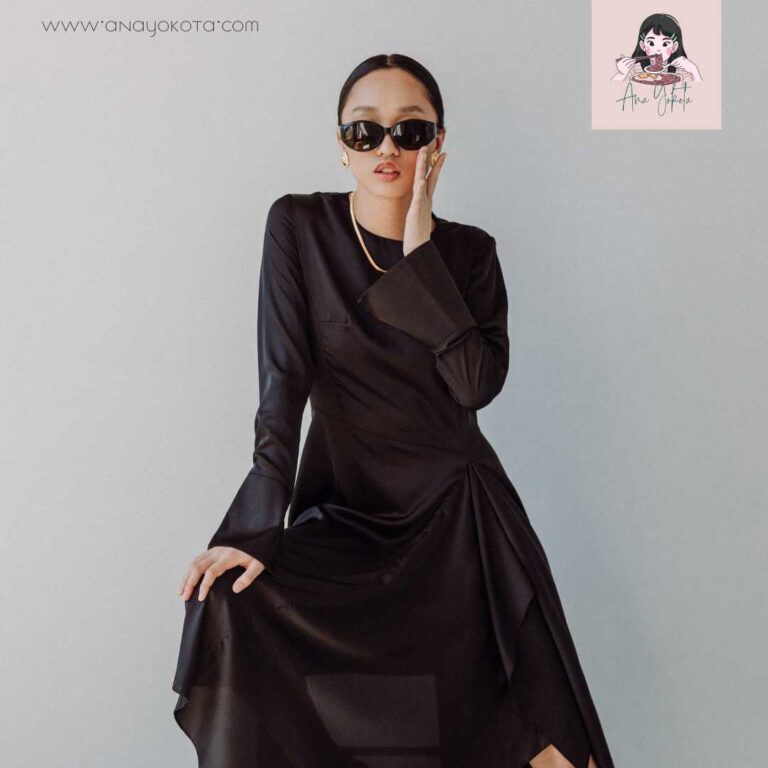This post may contain affiliate links. Please read my disclosure policy for more info.
Doljabi is the highlight of a Korean first birthday celebration called doljanchi. In this article you’ll learn the meaning and items used in the infamous doljabi ritual.
Doljabi is a Korean tradition carried out during doljanchi, a child’s first birthday celebration. Various items of symbolic significance are arranged in front of the baby. The child is encouraged to select (grab) one. The object the baby picks indicates their future profession or welfare.
First year birthday parties are a huge milestone in many cultures for babies and their families. In Korean culture, the celebration involves many elements, including traditional clothing and a huge feast. But the most anticipated moment is the doljabi tradition, a fun game that is said to predict the baby’s future.
Jaden was given the amazing choice to pick out his own doljabi element. After some thoughtful consideration, he proudly chose the bow and arrow! But what exactly makes a bow and arrow so powerful? To learn more about what this special choice holds for our son, continue reading!
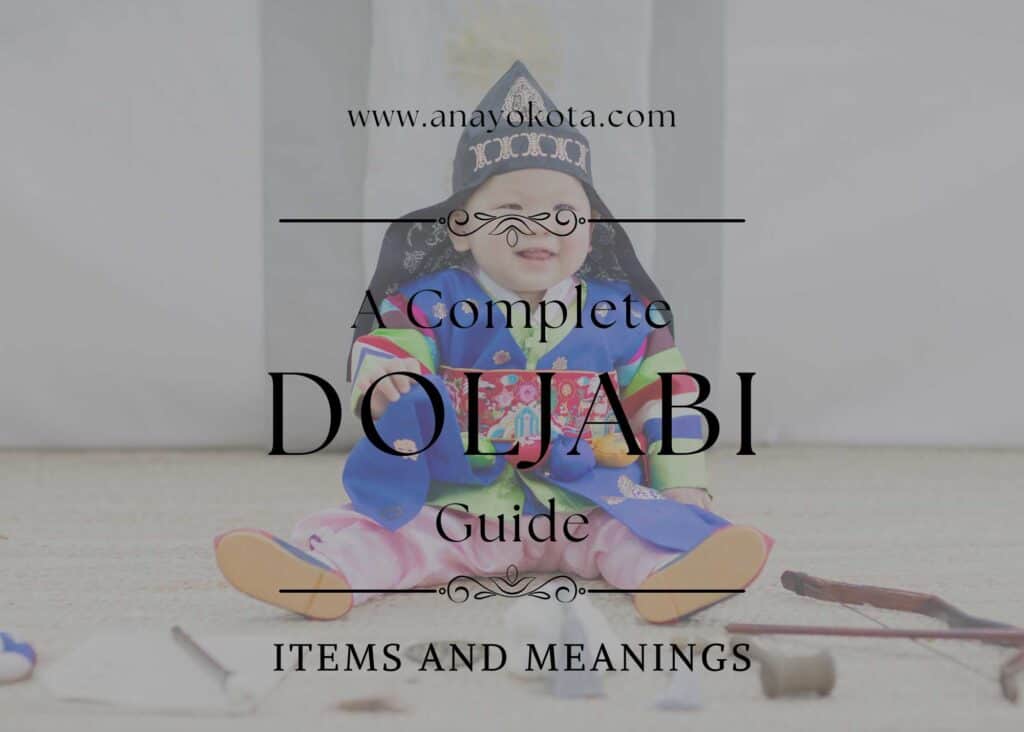
History of Doljabi
The history of doljabi and doljanchi are intertwined in a centuries-old celebration that began in Korea when it was perilous to be an infant. Babies often died due to a lack of food and modern medicine, such as antibiotics and vaccines. Then, infant deaths were so common that families would rejoice when a baby reached its 100th day, a celebration known as baek-il.
But rarer still was a child reaching the twelve-month mark. Even at the start of the 1900s, the Korean infant mortality rate was 50%. While it gradually improved, it was slow; thus infant mortality rate was still high in the 1950s, at 22%.
Thus, a baby’s first birthday was a moment of relief and hope. Having survived the deadliest period of childhood, parents and family could begin imaging the child having a future. Hence, the celebration, known as doljanchi, honors the child’s first birthday. Even poor parents would celebrate the day with family, friends, and members of their community.
During the festivities, the baby plays the doljabi ceremony, a fortune-telling game. Traditionally, five to ten items were placed before the baby, most representing blessings. The first object the baby grabbed indicated their future path. While parents did not hold their children to their doljabi selection, the choice gave hope.
Infant mortality rates in South Korea have plummeted. As a result, most babies live to see their first birthday. However, celebrating the milestone with friends and family continues with a huge feast and doljabi set.
However, the doljabi items are often more expensive. Modern objects are added to the traditional fair or swapped to represent current careers and dreams. In addition, parents may allow the child to choose up to three items. Nonetheless, the first birthday Korean tradition remains a highly anticipated moment during the celebration.
Doljabi Items and Their Meaning
Doljanchi items do not always represent a child’s future career. In the past, there were few job prospects, most being laborers. Consequently, many items, especially amongst traditional objects, represent a blessing, such as hope for a long life, good marriage, or never being hungry.
The objects can be purchased as a set or gathered from around the home. Some modern sets are made almost entirely out of a rubber-like material, making them safe for the baby to throw or chew without causing harm. Others are beautiful and ornate, a keepsake the baby could use for their children.
Airplane: destined to be a pilot
An athletic ball or equipment, such as golf clubs: Will be good at sports, or future professional athlete
Bow and arrow: a military career; may possess a fierce spirit
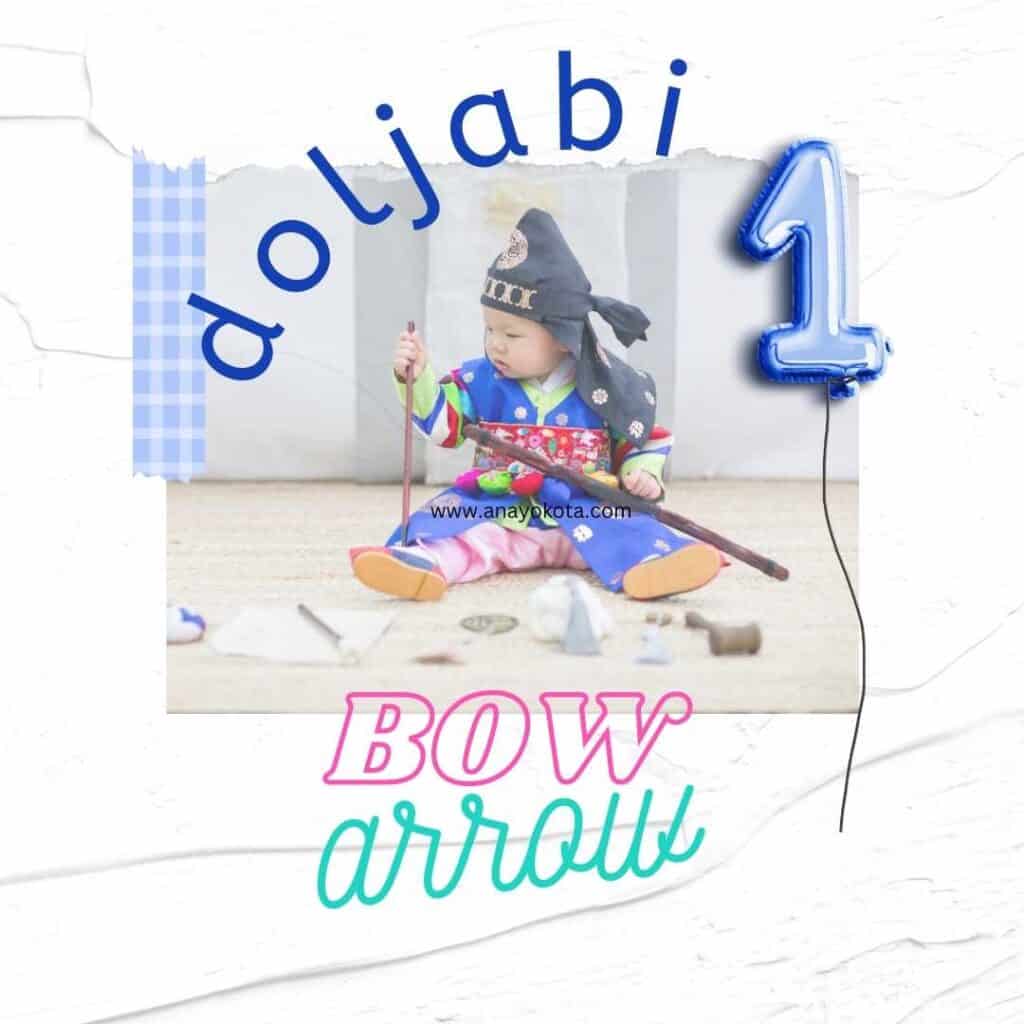
Brush, pencil, pen: Will be a scholar, artist, writer, or another creative career. However, the pen is sometimes perceived as a blessing of wealth.
Camera: A career as a photographer or journalist
Cell phone: Career in engineering or technology
Crown: Destine to be a beauty queen
Computer Mouse: Destine for the tech industry, such as a programmer
Five sheets of rolled colored paper: A symbol of vigor, represented by yellow (earth, center, nobility); blue (wood, east, good fortune); white (metal, west, truth, and purity); red (fire, south, passion, and positivity); black (water, north, wisdom)
Gavel: Destine for a legal career, such as a judge or attorney
Medallion: A future of high status or ranking, such as becoming a well-respected government official
Medicine Pot: A healer, doctor, or someone in the medical profession
Microphone: A future entertainer or celebrity, such as a singer
Money or Coins: The child will have great wealth
Notebook or Book: Scholar or wisdom
Piano: Musically gifted
Pincushion: A blessing of flexibility and creativity
Pouch: The child will have good luck and prosper, possibly financially
Rice: The child will live a life without hunger
Silk plat in red and blue: The baby will have a good marriage and be a wonderful spouse
Spatula: Future baker or chef
Stethoscope: The baby will become a doctor
Thread or yarn: A blessing of long life
Doljabi vs Doljanchi
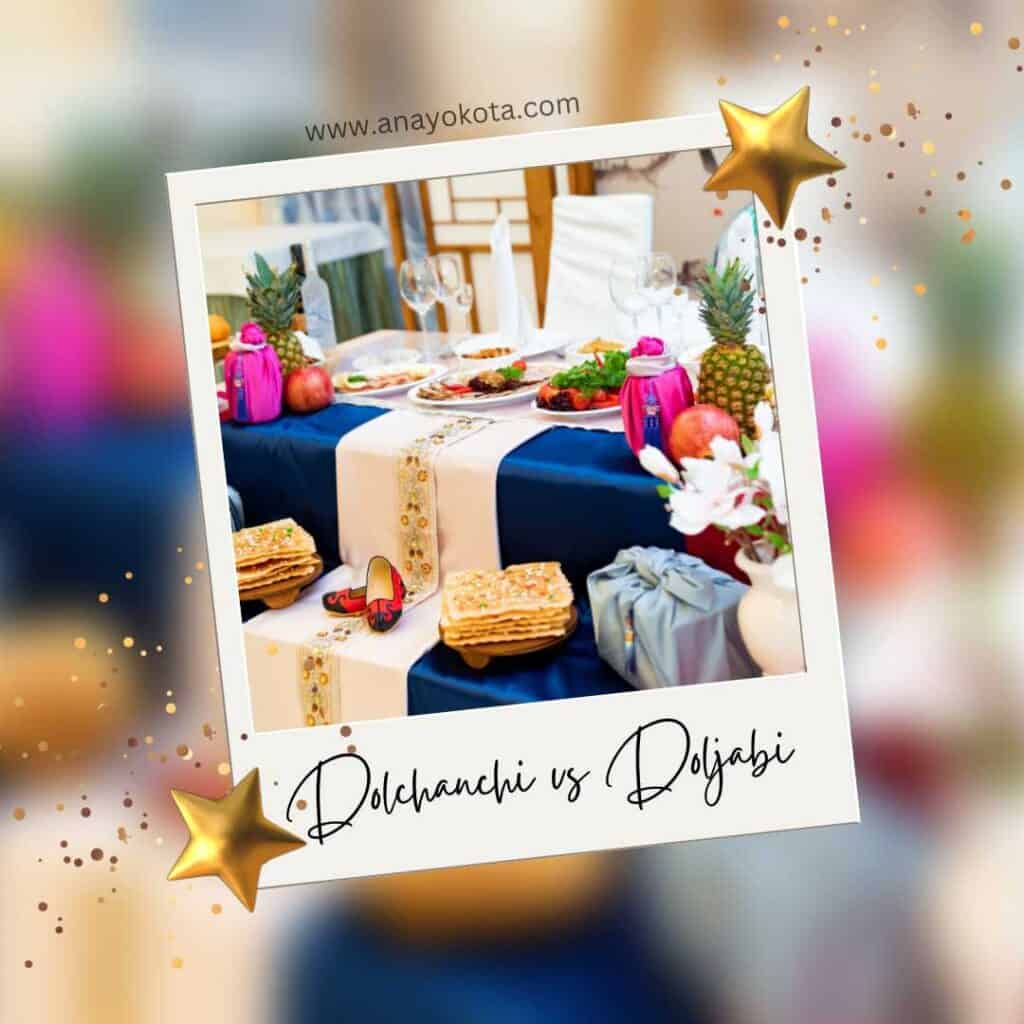
Doljabi and doljanchi are sometimes confused by those less acquainted with the tradition. In addition, both contain the word “dol,” Korean for two, since, as per Korean tradition, a child is one on the day they are born. But while the two words are related, they are not the same.
Doljanchi is the word for the entire birthday festivities. It is the biggest birthday celebration of a child’s life. The next big birthday ceremony isn’t until a person reaches sixty, known as hwangap.
Doljanchi is a feast that involves certain foods and traditional clothing. The event is full of symbolism, including how fruit and other items are displayed on the dolsang, the birthday table that was traditionally low to the floor.
Like birthdays around the world, gifts are given during the celebration. However, these are typically more expensive than a typical birthday. For example, the child is given gold jewelry, such as tiny bracelets or rings. However, in this modern age, many give money, sometimes as a special savings account for the child to access later, such as for university.
Doljabi is a game played during Doljanchi. It is only one slice of the special day. However, the fortune-telling game is the most anticipated. As mentioned above, the child “grabs” their future by selecting an item from an array of symbolic objects.
Historical Doljabi Items Vs. Modern Doljabi Items
Historically, doljabi items were more likely to represent a blessing than a career. As mentioned previously, noteworthy occupations were scarce and unlikely for most people. Thus, parents were less concerned about the child’s career and more focused on if the baby would have a long life or be wealthy. Today, many families blend some traditional objects with modern items for their Korean birthday party.
Historically, most babies picked one object. Sometimes a second was selected as “plan B.” But the tradition is more lighthearted in modern times, and many families allow the baby to choose three items. Nonetheless, during the Korean dohl, the first item still holds the most significance.
Traditional doljabi items include the following:
- Bow and arrow
- Brush, pencil
- Five sheets of rolled colored paper
- Medallion
- Medicine Pot
- Money
- Notebook
- Pincushion
- Pouch
- Rice
- Silk plat in red and blue
- Thread or yarn
Modern doljabi items are more career focused, including opportunities that didn’t exist centuries ago.
Modern doljabi items include the following:
- Airplane
- An athletic ball, such as golf, baseball, soccer, etc.
- Camera
- Cell phone
- Crown
- Computer Mouse
- Gavel
- Microphone
- Piano
- Spatula
- Stethoscope
However, since modern items are not traditional, parents could use anything to represent a current career.
What is Baby In Korean
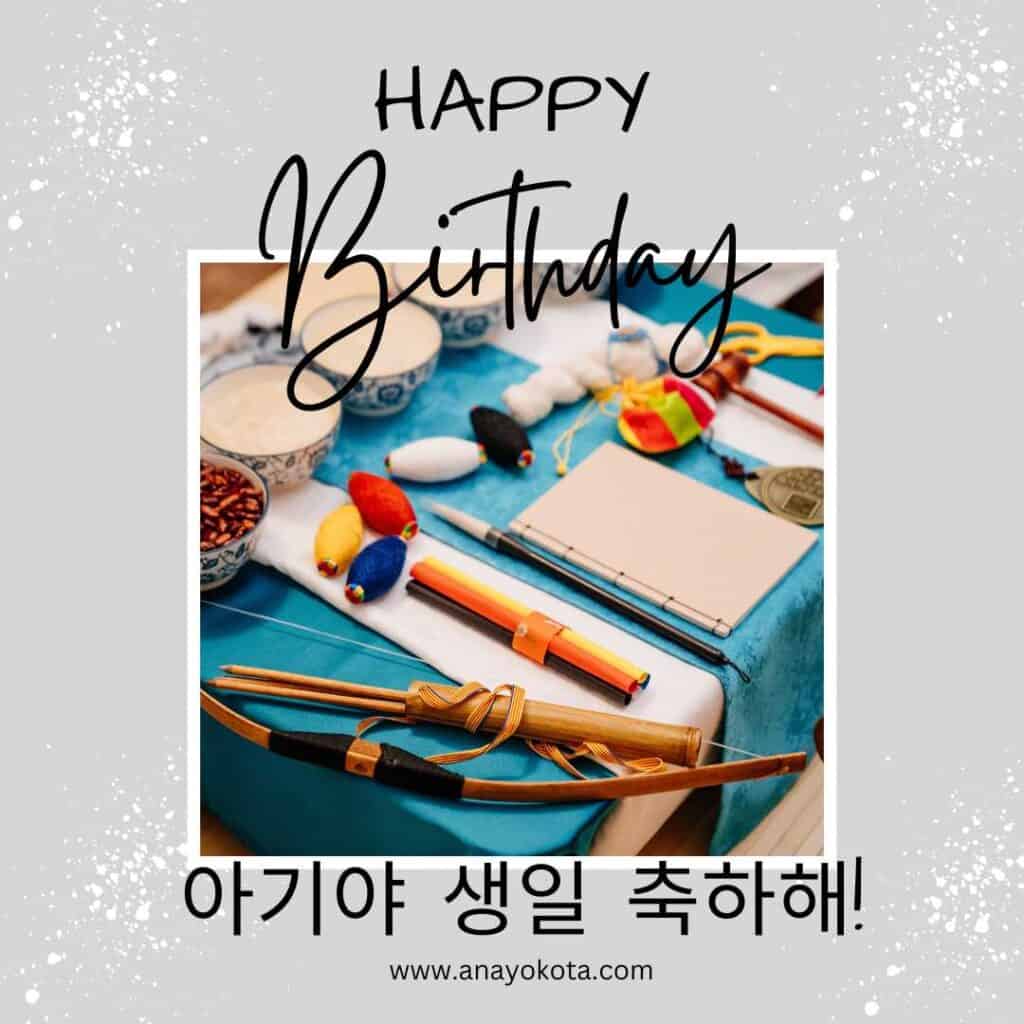
The ancient traditions surrounding doljabi practices often carry deep symbolic importance. Explaining the doljabi items meaning can be crucial to their associated ceremonial activities.
Furthermore, knowing how to say baby in this context is a fundamental part of understanding and honoring both the doljabi culture and the family carrying on its traditions. The appropriate wording is essential for families waiting to hear from their little one.
A respectful knowledge and strong command of different terms related to traditional Korean customs like doljabi can make a big impression. Familiarity strengthens familial relationships and creates a harmonious atmosphere of reception when celebrating such important events during the lifetime of a growing person.
So, let’s learn how to say, “Happy birthday, baby” in Korean for the next Korean one year birthday.
아기 or 애기 (ahgi or aegi): there are two ways to spell baby. Though both are the same, 아기 (ahgi) is the proper way to say, “baby.” Whereas, 애기 is a more endearing cute way to say, “baby.”
생일 축하해 is, “Happy birthday” in Korean.
So, put them together and the next time you’re at a Korean 1st birthday party, you can tell the baby happy birthday like this, “아기야, 생일 축하해!” (ahgiya, saeng-il chughahae)
Also, have you ever wondered, “What do Korean babies eat?” I have the answer for you! From Korean sweet potato to Korean purple rice, you can find a full list of foods that Korean babies eat.
Conclusion on Korean First Birthday Tradition
Get ready for Doljabi, an age-old game oozing with excitement and hope for adorable little ones who’ve conquered their riskiest early years! Now, their future is in their hands, quite literally!
Watch in awe as they grab onto enchanting objects, creating magical memories for everyone! This delightful tradition is bound to paint smiles on faces, one precious baby at a time!




